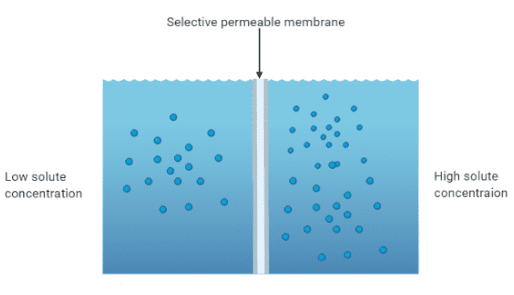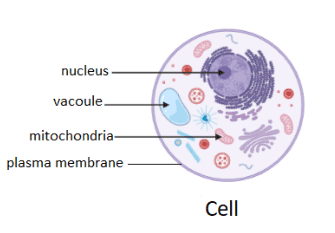
Plasma membrane is a
A. Permeable
B. Selectively permeable
C. Impermeable
D. Semi-permeable
Answer
477.9k+ views
2 likes
Hint:Plasma membrane is also called cell membrane. The plasma membrane or the cell membrane surrounds the cell and encloses its contents of cytoplasm and nucleoplasm. It separates the cell from the outside environment.
Complete answer: Permeability can be defined as the degree of diffusion of liquids, gases, and other dissolved substances through a membrane. This ability of a substance to regulate passage through the membrane is called permeability. Depending upon the permeability of the membrane, it is classified as a freely permeable membrane, selectively permeable membrane, impermeable membrane, and a semi-permeable membrane. The selectively permeable membrane or differentially permeable membrane allows passage of only selected molecules to pass through it. Some of the examples of the selectively permeable membrane are the membrane that surrounds the subcellular organelles, tonoplast, and cell membrane. Cellophane is an example of a non-living selectively permeable membrane. The rate of permeability of different molecules differs in selectively permeable membranes. Plasma membrane which is also called cell membrane is selectively permeable as it only allows selected molecules of solute and solvent to pass through it.


So, option B is the correct option.
Note: Freely permeable membrane allows passage of various molecules through the membrane. The cell wall is an example of a freely permeable membrane. The impermeable membrane does not allow any kind of movement through it. A Cutinized cell wall is an example of an impermeable membrane. A semi-permeable membrane allows passage of only solvent molecules to pass through it. The animal bladder, parchment membrane are examples of semi-permeable membranes. Apart from natural membranes, artificial membranes are also present that are semi-permeable in nature.
Complete answer: Permeability can be defined as the degree of diffusion of liquids, gases, and other dissolved substances through a membrane. This ability of a substance to regulate passage through the membrane is called permeability. Depending upon the permeability of the membrane, it is classified as a freely permeable membrane, selectively permeable membrane, impermeable membrane, and a semi-permeable membrane. The selectively permeable membrane or differentially permeable membrane allows passage of only selected molecules to pass through it. Some of the examples of the selectively permeable membrane are the membrane that surrounds the subcellular organelles, tonoplast, and cell membrane. Cellophane is an example of a non-living selectively permeable membrane. The rate of permeability of different molecules differs in selectively permeable membranes. Plasma membrane which is also called cell membrane is selectively permeable as it only allows selected molecules of solute and solvent to pass through it.


So, option B is the correct option.
Note: Freely permeable membrane allows passage of various molecules through the membrane. The cell wall is an example of a freely permeable membrane. The impermeable membrane does not allow any kind of movement through it. A Cutinized cell wall is an example of an impermeable membrane. A semi-permeable membrane allows passage of only solvent molecules to pass through it. The animal bladder, parchment membrane are examples of semi-permeable membranes. Apart from natural membranes, artificial membranes are also present that are semi-permeable in nature.
Latest Vedantu courses for you
Grade 8 | CBSE | SCHOOL | English
Vedantu 8 CBSE Pro Course - (2025-26)
School Full course for CBSE students
₹45,300 per year
EMI starts from ₹3,775 per month
Recently Updated Pages
Master Class 11 Economics: Engaging Questions & Answers for Success

Master Class 11 Business Studies: Engaging Questions & Answers for Success

Master Class 11 Accountancy: Engaging Questions & Answers for Success

Master Class 11 English: Engaging Questions & Answers for Success

Master Class 11 Computer Science: Engaging Questions & Answers for Success

Master Class 11 Maths: Engaging Questions & Answers for Success

Trending doubts
State and prove Bernoullis theorem class 11 physics CBSE

1 ton equals to A 100 kg B 1000 kg C 10 kg D 10000 class 11 physics CBSE

State the laws of reflection of light

One Metric ton is equal to kg A 10000 B 1000 C 100 class 11 physics CBSE

1 Quintal is equal to a 110 kg b 10 kg c 100kg d 1000 class 11 physics CBSE

Difference Between Prokaryotic Cells and Eukaryotic Cells




